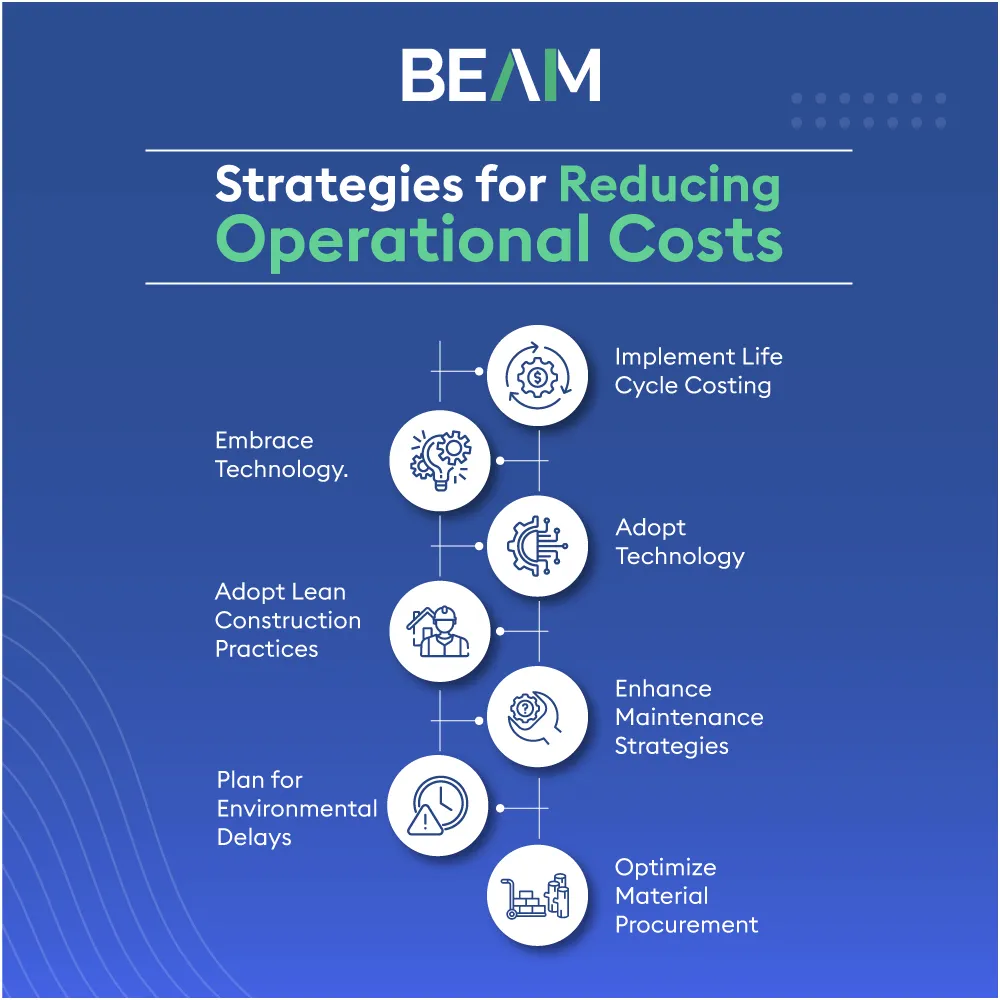The construction industry is a complex ecosystem where margins are tight and competition is fierce. Every dollar saved is a dollar earned. Amidst rising material costs, labor shortages, and economic uncertainties, controlling operational expenses is paramount for long-term success.
Managing operating costs, including labor, materials, equipment, and unforeseen delays, is essential for sustaining business success. High operating expenses can limit your bidding capacity, reduce competitiveness, and threaten long-term sustainability. By proactively monitoring expenses and implementing cost-saving strategies, contractors can improve efficiency, profitability, and project outcomes.
Effective operating cost management requires a deep understanding of both fixed and variable expenses and a proactive approach to cost control. This involves evaluating current expenditures and implementing strategies to minimize waste and maximize efficiency. This guide will delve into practical methods for reducing operating costs.
Understanding Operating Costs in Construction
Operating costs are the ongoing expenses necessary to run a construction business. These include:
- Fixed costs: Rent, utilities, administration, and equipment leasing.
- Variable costs: Labor, materials, maintenance, and unexpected repairs.
Effective management of these costs is crucial for contractors focused on reducing construction costs and maintaining healthy profit margins.
Strategies for Reducing Operational Costs
To effectively reduce operational costs, construction teams must adopt an approach that balances smart planning, technology, and efficiency. Implementing Life Cycle Costing helps forecast long-term expenses, while embracing technology, such as AI-powered takeoff software, drives accuracy and productivity.
Lean construction practices eliminate waste and streamline workflows, and strong maintenance strategies prevent costly equipment downtime. Planning for environmental delays keeps projects on schedule, while optimizing material procurement and asset tracking ensures better OpEx control and supports smarter contractor budgeting.
Together, these strategies help contractors improve profitability, reduce waste, and enhance overall project performance.

1. Implement Life Cycle Costing
Life Cycle Costing (LCC) evaluates total ownership costs, including initial construction expenses and ongoing operational costs. By using LCC, contractors can make informed choices about materials, methods, and designs that reduce long-term expenditures.
Key components include:
- Initial costs: Design, permits, construction, and equipment purchases.
- Operational costs: Energy, maintenance, staffing, and repairs.
- Disposal costs: Demolition, waste management, and site restoration.
Using LCC helps in contractor budgeting and ensures every project decision considers its long-term financial impact.
2. Embrace Technology
The construction industry is rapidly evolving, with technological innovations playing a pivotal role in reducing operating costs. One significant advancement is using AI-powered takeoff software, like Beam AI. This technology automates quantifying accurate materials from digital plans, significantly reducing the time and effort required for manual takeoffs.
By integrating AI-powered takeoff software, you can streamline your pre-construction phase, minimize human error, and improve overall productivity. This not only lowers your operating costs but also allows you to bid more competitively and win more projects.
3. Adopt Lean Construction Practices
Lean construction is a methodology that focuses on minimizing waste and maximizing value throughout the construction process. By adopting lean principles, you can improve efficiency, reduce costs, and deliver higher-quality projects.
Key lean construction principles include:
- Identifying Value: Determine what adds value to the project from the client's perspective and focus efforts on those activities.
- Mapping the Value Stream: Analyze the entire construction process to identify and eliminate waste.
- Creating Flow: Ensure that value-creating steps proceed without interruptions.
- Establishing Pull: Produce only what is needed when it is needed, reducing inventory and overproduction.
- Pursuing Perfection: Continuously seek ways to improve processes and eliminate waste.
Implementing lean construction practices can lead to significant cost savings. For example, optimizing scheduling and resource allocation can reduce downtime and avoid costly delays. Lean construction also promotes a culture of continuous improvement, where teams are encouraged to collaborate and innovate, further enhancing efficiency and reducing costs.
4. Enhance Maintenance Strategies
Proper maintenance is vital for reducing construction costs and OpEx control. Regular maintenance ensures that buildings and equipment remain in good working condition, reducing the risk of unexpected breakdowns and costly repairs. There are several maintenance strategies to consider:
- Preventive maintenance: Scheduled maintenance activities aimed at preventing equipment failure.
- Predictive maintenance: Using data and analytics to predict when equipment will fail and perform maintenance accordingly.
- Reliability-centered maintenance: A comprehensive approach that considers the impact of equipment failure on overall operations and prioritizes maintenance activities accordingly.
By choosing the right maintenance strategy and adhering to a well-defined maintenance plan, you can extend the lifespan of your assets and avoid the high costs associated with unplanned downtime and repairs.
5. Plan for Environmental Delays
Weather conditions can significantly impact construction schedules and budgets. Extreme temperatures, heavy rain, and high winds can cause delays and increase operating costs. To mitigate these risks, planning for environmental delays in your project estimates is essential. By understanding the weather patterns and site conditions for your project location, you can develop contingency plans and adjust schedules accordingly. For example, scheduling intensive outdoor tasks during cooler parts of the day or using modular construction to avoid weather-related delays can help keep your project on track and within budget.
6. Optimize Material Procurement
Material procurement and asset tracking are key areas where construction companies can significantly cut operating costs. Efficient procurement involves more than just securing the best prices; it's about strategic sourcing and making informed decisions. Similarly, effective asset tracking prevents costly losses and inefficiencies. Implement technology solutions like Beam AI's AI-powered takeoff software to streamline your inventory management. Integrating automated takeoff software with real-time tracking allows you to monitor materials and tools, manage inventory levels, and set alerts for low quantities. This reduces the risk of misplaced assets, optimizes resource allocation, and reduces costs.
Final Words
Reducing construction costs requires a strategic, proactive approach. Integrating life cycle costing, embracing technological innovations, adopting lean practices, and optimizing procurement and maintenance can significantly enhance project profitability.
By leveraging modern tools like AI-powered takeoff software, contractors can streamline workflows, reduce manual effort, and improve decision-making. Focusing on OPEX control and smart contractor budgeting ensures long-term sustainability, efficiency, and competitive advantage in a challenging construction landscape.
Start applying these strategies today and experience measurable improvements in operational efficiency and profitability.

.png)








.jpg)


.webp)

